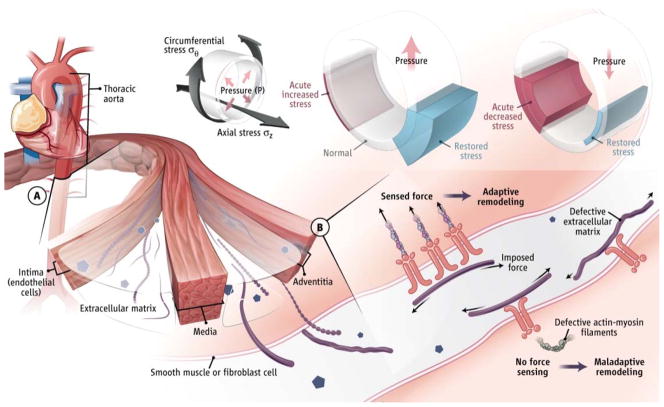Figure. Aortic mechanobiology.
(A) Cells of the thoracic aortic wall remodel an extracellular matrix (ECM). Endothelial cells (ECs) sense and respond to changes in wall shear stress resulting from blood flow; smooth muscle cells (SMCs) and fibroblasts (FBs) sense and respond to changes in intramural circumferential (σθ) and axial (σz) stresses resulting from blood pressure (P) and motion of the heart. Increases in P increase wall stress but adaptive thickening restores stress to normal values; decreases in P decrease stress but adaptive thinning restores stress.
(B) Cells sense and regulate the ECM via integrins and intracellular contractile structures (actin-myosin filaments). Sensing low versus high stress results in different cell signaling. Misperception of high stress as low stress can result in maladaptive remodeling.

